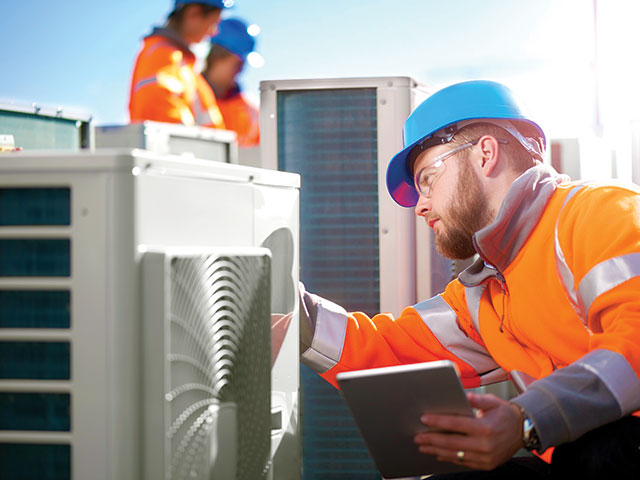As temperatures rise during the summer months, air conditioning (AC) becomes essential to maintaining comfort in our homes and workplaces. However, with the increasing reliance on AC systems, energy consumption also rises, leading to higher electricity bills and a larger carbon footprint. Fortunately, there are several ways to enhance the energy efficiency of your air conditioning system, helping you save money and reduce environmental impact without compromising comfort. In this blog post, we’ll explore practical energy efficiency tips for your AC system.
1. Regular Maintenance and Cleaning
One of the most effective ways to ensure your air conditioning system runs efficiently is to keep it well-maintained. Like any mechanical system, AC units require periodic maintenance to function at their best. Here are some key maintenance tasks to prioritize:
- Change the Air Filters: Dirty or clogged filters can restrict airflow, forcing the AC to work harder to cool your space. This leads to higher energy consumption. Replace or clean the air filters every 1–3 months, depending on usage and the type of filter.
- Clean the Coils: Over time, dirt and debris can accumulate on the evaporator and condenser coils of your AC unit, reducing its efficiency. Regularly inspect and clean the coils to ensure they’re functioning optimally.
- Inspect the Ductwork: Leaky ducts can waste a significant amount of energy by allowing cool air to escape before reaching your living spaces. Have your ducts inspected and sealed to prevent energy loss.
- Check the Refrigerant Level: If your AC is low on refrigerant, it can’t cool the air efficiently. Ensure that your system is recharged with refrigerant if necessary, but always call a professional for this task.
2. Install a Programmable Thermostat
A programmable thermostat is one of the most cost-effective ways to improve energy efficiency. By automatically adjusting the temperature when you’re away or asleep, a programmable thermostat prevents unnecessary cooling. For example, you can set the temperature to be higher during the day when you’re not home and lower it before you return, so your space is comfortable without using excess energy.
- Smart Thermostats: Consider upgrading to a smart thermostat, which can learn your schedule and adjust the temperature based on your preferences. Some models allow you to control the thermostat remotely via smartphone apps, giving you even more control over your cooling system.
3. Optimize Your Thermostat Settings
Adjusting your thermostat settings can significantly impact your energy consumption. While the ideal temperature can vary from person to person, the U.S. Department of Energy recommends setting your thermostat to 78°F (25-26°C) when you’re at home and 85°F (29-30°C) when you’re away.
Every degree you raise the thermostat can result in a 6-8% savings on cooling costs. If you find it difficult to tolerate higher temperatures, try using fans or other methods to stay cool instead of turning down the thermostat.
4. Use Ceiling Fans to Improve Air Circulation
Ceiling fans are an excellent complement to air conditioning systems, helping to distribute cool air more evenly throughout a room. By circulating the air, fans create a wind-chill effect, which makes the temperature feel cooler without lowering the thermostat setting.
- Fan Direction: In summer, make sure your ceiling fans rotate counterclockwise, as this pushes air down, creating a cooling breeze. In winter, reverse the direction to clockwise, so the fan circulates warm air down from the ceiling.
5. Seal Gaps and Insulate Your Home
A well-insulated and sealed home keeps the cool air inside and prevents hot air from entering, reducing the workload on your AC system. Ensure your home is well-insulated by addressing the following areas:
- Windows and Doors: Seal gaps around windows and doors with weatherstripping or caulking. Even small leaks can let warm air in, making your air conditioner work harder to cool the space.
- Attic Insulation: Insulating your attic is especially important, as hot air rises. Proper insulation in the attic can prevent warm air from seeping into your home, keeping it cooler and reducing the need for air conditioning.
- Insulated Ducts: Make sure your ducts are insulated, especially if they pass through unconditioned spaces like attics or crawlspaces. Insulation prevents the air from warming up before it reaches your living areas.
6. Close Curtains and Blinds During the Day
Sunlight streaming through your windows can significantly increase the cooling load on your air conditioner. To mitigate this, close curtains or blinds during the hottest part of the day, particularly on windows that face the sun. This can prevent unwanted heat gain and help maintain a comfortable indoor temperature. Additionally, regular aircon servicing Eunos can ensure your system is running efficiently, reducing the strain caused by excessive heat and improving overall cooling performance.
- Reflective Window Film: If you want to go a step further, consider applying reflective window film or installing shades designed to reduce solar heat gain. These products can block a significant portion of solar radiation, making it easier for your AC to maintain a cool temperature inside.

7. Upgrade to an Energy-Efficient Air Conditioning System
If your air conditioning system is old or inefficient, it may be time to consider upgrading to a newer, more energy-efficient model. Modern AC units are designed with advanced technologies that use less energy to cool your space. Look for air conditioners with a high SEER (Seasonal Energy Efficiency Ratio) rating. The higher the SEER rating, the more energy-efficient the system.
Additionally, inverter-based air conditioners are more efficient than traditional systems, as they adjust the compressor speed according to the cooling demand, reducing energy waste.
8. Consider Zoned Cooling Systems
Zoned cooling allows you to control the temperature of different areas (or zones) of your home independently. This means you can avoid cooling unused rooms, saving energy. Zoned systems work with a series of dampers and thermostats placed throughout the home, allowing for customized temperature settings.
- Ductless Mini-Split Systems: For homes without ductwork, consider a ductless mini-split system. These systems allow you to cool individual rooms or zones, providing both comfort and energy savings.
9. Use Natural Ventilation When Possible
During cooler times of the day, such as early mornings or late evenings, consider using natural ventilation to cool your home. Open windows to allow fresh air to flow through and push out warm air. If you live in an area with a mild climate or evenings that cool down, this can be a great way to give your AC system a break and save on energy costs.
10. Reduce Heat Generating Activities
Certain household activities can add extra heat to your home, making your air conditioner work harder. Reducing these activities can lower the cooling load on your AC system:
- Limit Cooking with Heat-Producing Appliances: Try using a microwave, toaster oven, or slow cooker instead of an oven or stove during hot weather.
- Switch to Energy-Efficient Lighting: Incandescent bulbs generate a significant amount of heat. Switch to LED bulbs, which are cooler and more energy-efficient.
- Avoid Using the Dryer During the Day: Clothes dryers release a lot of heat into your home. If possible, air-dry clothes or use the dryer during the evening when it’s cooler.
Conclusion
By adopting a few simple yet effective energy efficiency tips, you can keep your air conditioning system running smoothly and cost-effectively. Regular maintenance, smart thermostat use, proper insulation, and energy-efficient upgrades are just some of the ways to ensure that your AC system operates efficiently, reducing energy consumption and your carbon footprint. With a little effort, you can enjoy a cooler home without the soaring energy bills.




